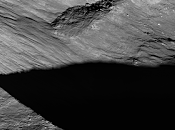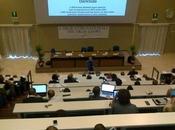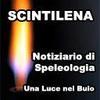By Andrea Scatolini on agosto 10th, 2012
by Laura Sanna


Astronauts are selected, prepared, trained, disciplined people.
Exploring the depths of space is a task for a few people. It’s a hostile environment, dark, partially unknown, with scarce resources.
Space operations are complex, with equipment to test, install and repair, scientific experiments to carry out, procedures to follow. Each activity requires attention, technical skills, many require psychomotor coordination, and most tasks are team actions, demanding communication and coordination.
To train, Astronauts cannot move to the Moon: they need simulators and terrestrial analogues with similarities to space. When it comes to simulating the space environment submarine habitats, hot deserts and Antarctic stations are in the list. One of the best terrestrial analogue to a planetary setting is definitely the cave environment.
Darkness, constant temperature, limited field of view, physical obstacles, strict safety rules for personal and team safety, isolation, loss of time awareness, limited resupply, need to work as a team. If you add to all that also exploration, documentation of the explored areas (mapping and photography), scientific experiments and sampling procedures, the similarities with a space mission becomes very realistic.
In September 2012 the European Space Agency (ESA) experts have again chosen Supramonte in Sardinia as a scenery for a space analogue mission: the CAVES 2012 training course. In this area large unexplored caves still exist, with temperature and environmental conditions suitable for novices.
“CAVES” is not just the plural of cave, it’s an acronym, it stands for Cooperative Adventure for Valuing and Exercising HBP Skills. The course trains Astronauts who will need to operate in multicultural teams, maintaining safety and efficiency in critical operational conditions, during long duration spaceflight. During the course their team dynamic will be analysed (leadership, communication, cooperation, interaction and group living), as well as their personal efficacy (situation awareness, stress management, decision making skills).
Similar courses are held by NASA in submarine environment (NEEMO) and by Roskosmos in survival training. They are based on competency models derived from an analysis of operations carried out in critical environments, originally developed by NASA and then applied to civil aviation (NOTHECS), and now extended to the training of air traffic, railway, nuclear powerplant, oil platform control personnel, and in the last years also to medical personnel in surgery rooms.
The CAVES 2012 team comprises a dozen individuals: six astronauts (two US from NASA, one Russian from Roskosmos, one Japanese from JAXA, one Canadian from CSA and one Danish from ESA), a human factors trainer from ESA, various speleological experts and technical instructors, a photo and video team and a scientist.
To ensure immediate handling of potential emergencies, safety of course activities is coordinated with the support of the Sardinian delegation of the national speleological rescue organisation CNSAS, using advanced communication means.
CAVES lasts 12 days, of which the first 5 consist of a full immersion into cave progression techniques, mapping, photography, scientific monitoring, teamwork, safety and mission tasks, followed by 6 days living underground, in a camp setup by the astronauts a few hours from the cave entrance. The crew transfers to the camp directed by a technical team of caving instructors. Once at the campsite the responsibility for mission success is handed over to the astronauts: they shall explore and document the cave, under the vigilant supervision of a cave safety team. The astronauts will conduct a series of experiments and sampling procedures, according to a daily timeline similar to the one used on the International Space Station (ISS). They shall select a team leader, and assign responsibilities for the various activities (photography, mapping, science, exploration, communication, campsite management and logistics), sharing the tasks.
The scientific programme foresees water, microbiological (air, water, rock), biological samples, and data collection from a micrometeorological station installed in the cave, which monitors temperature, relative humidity, wind speed and direction of air flow. These data allow a constant monitoring of the environment where the astronauts live, and in addition can offer very interesting scientific results (new microbiological or endemic life forms, anomalies in airflow, etc.). The data from CAVES 2011 are very promising, indicating that the course scientific experiments have a value for the speleological investigation of the area rather than just as a training opportunity.
At the end of the mission, once resurfaced to see the light, the astronauts will need to create a report on their activities, elaborating cave maps, selecting photos, constructing graphs and writing a scientific report, which will all be transferred to the next crew of cavenauts.
CAVES is an opportunity also for Speleology, often considered a niche activity, now for the first time selected by the international space agencies as a potential resource to enrich and support future missions beyond the borders of our home planet. Speleological explorations, often carried out outside the spotlight, without mediatic impact and of interest only to a limited number of fans, thank to this course show all their relevance and importance for humankind.
To follow the preparation and the mission itself, join us on twitter @ESA_CAVES https://twitter.com/ESA_CAVES
CAVES 2012 will be supported by:
Loredana Bessone ESA course design and coordination
Advanced Training Solution technical direction and logictic operation
Jo De Waele and Francesco Sauro from Bologna University scientific coordination
Paolo Marcia from Sassari University and Petra Rettberg from the German Space Agency (DLR) biological and microbiological scientific programme
Laura Sanna from Sassari University communication and scientific assitance
Francesco Sauro SNSN CAI and Federico Faggion INTecSS CNSAS technical instructors
Flavio Catte, Carla Corongiu, Marcello Moi, Giovanni Maria Pintori e Fabrizio Silvestri logistic support
Vittorio Crobu and Sirio Sechi photo and video recording and editing
VIII delegazione CNSAS Sardegna
Categorized under: Esospeleologia, Importanti, Notizie dall'estero, Notizie Principali, Sardegna.
Tagged with: english, Inglese.




